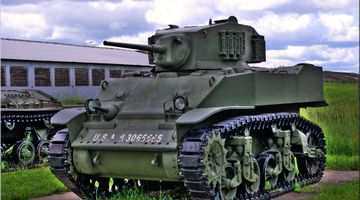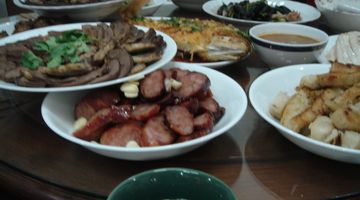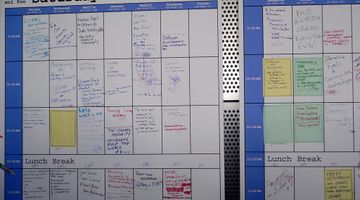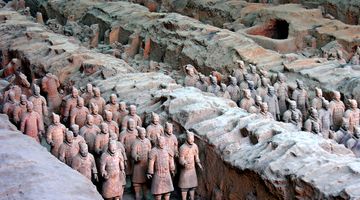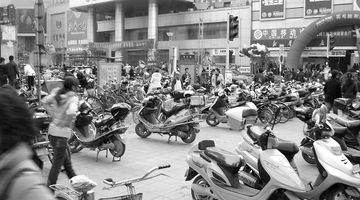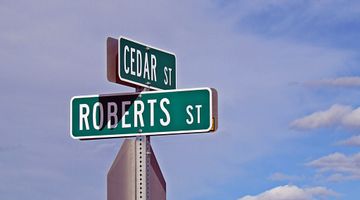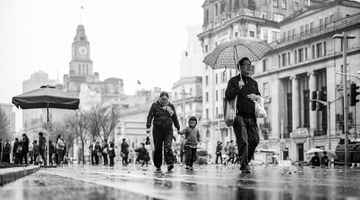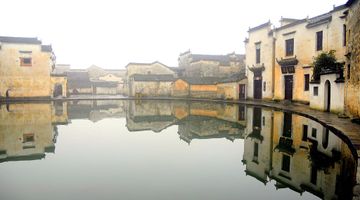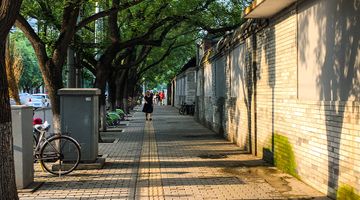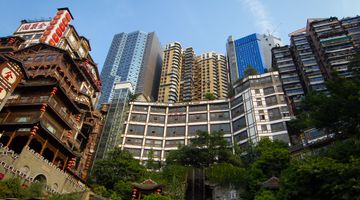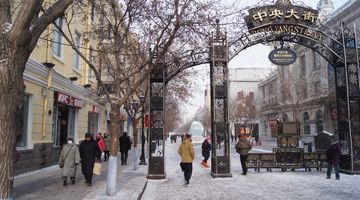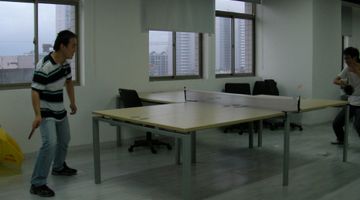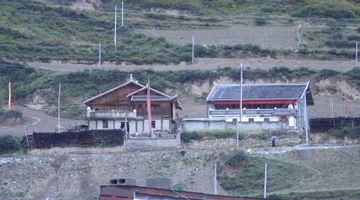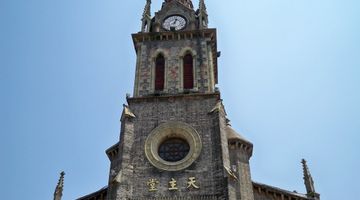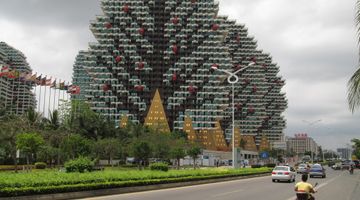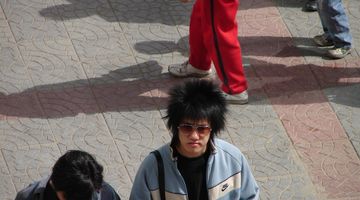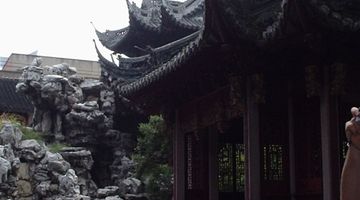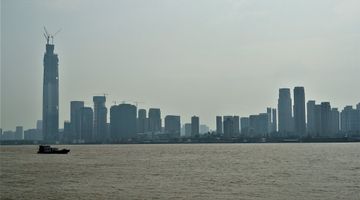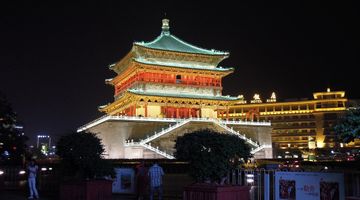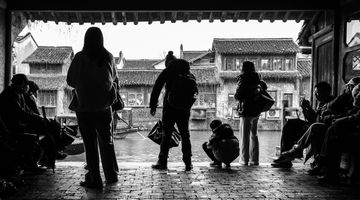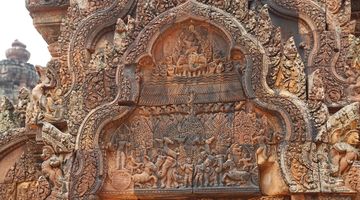Trains in China – Your Quick Guide to Railway Travel In China
What is the Railway Like in China
Rail transportation is a crucial part of the Republic of China’s long distance transport network with more than 121,000 kms (75,186 miles) of railways making it the world’s second longest rail network. That includes 19,000 km (11,806 miles) of HSR or High Speed Rail. China has the world’s longest HSR network and is expanding it annually with 9,000 km of new railways being added in 2015. There is a long term plan to expand the network to 274,000km (170,000 miles) by the year 2050.
Where to Look for Train Schedules
All the latest information about train schedules can be found on the China Railways website, the cost of seats, numbers and types of seats still available as well as departure and arrival times of trains can be found simply by entering either the train number or your departure and arrival choices of stations. This information can also be found on several English language websites specialising in China such as Travel China Guide and China Highlights.
What are the Railway Stations like in China?
There are more than 5,500 railway stations across China; the older stations are located in the centre of the towns and cities they serve. The newer stations are often a few miles outside the city centre but usually with good local transport links to connect to the city centre.
A typical station consists of a terminal building which holds ticket offices, waiting rooms, boarding gates to the platforms of which there may be one at a small station up to 20 or more at major stations. Within the terminal building are restaurants, toilets, facilities for hot water and electronic message boards for train information.
Beijing West Railway Station was the largest station in Asia when it was opened in 1996. It serves an average numbers of passengers in excess of 150,000 every day and can handle up to 400,000 people per day. It has twenty tracks served by 18 platforms. In the departure area there are 13 waiting rooms, multiple restaurants and even its own police station.
Shanghai’s Hongqiao Railway Station is the largest railway station in Asia opening in 2010. It handles high speed rail trains and is 420 metres long, 200 metres wide and 70 metres high. It can handle up to 10,000 passengers at any given time and serves an average of 210,000 passengers every day.
Are There Storage Rooms at the Railway Stations?
There are rooms for you to leave your luggage; they are attended in the large railway stations 24 hours a day. You pay a fee depending on the size of your bag(s) and normally for 24 hours or 48 hours. I would advise you to ensure your bags are securely locked and not to leave anything too valuable. An average cost for 24 hours would be CNY 10-20.
How Long in Advance Can You Book Tickets?
Train tickets can be bought online up to 30 days before the date of departure and up to 60 days during peak travel periods such as the Chinese Spring Festival (January/February) or National Holiday (the first week of October). You can buy them from the train station and ticket offices up to 28 days in advance, while on some local train tickets are only available up to ten days in advance. Tickets for trains up to and immediately after holidays can be very difficult to buy and if you can avoid travelling at this time.
Some of the recommended ways to buy tickets include through an online travel agent such as c-trip or China tour. They will need a copy of the photo page with your passport number to make the booking but it is easy and in English. They can deliver to your home address (if time allows) or to your hotel. You could buy the tickets yourself at the railway station, be prepared for long queues when buying your tickets. You will need your passport or the passports of everyone buying a ticket. Have your preferred travel dates, train details and alternatives written in Chinese as English is generally not spoken by railway staff. Have enough cash; check the price before you go, as foreign credit cards are not accepted at the train stations. Do not try to use the self service machines, they are in Chinese and you need a Chinese ID card to operate them.
An alternative to buying at the railway station is to use a ticket office; these are located at several places around cities all across China and may be quicker than the railway station. No English is spoken at these so prepare your instructions as above. You will have to pay a CNY5 fee above the cost of each ticket you purchase. They are usually open from 9am until 6pm and accept cash only.
You could use China Rail’s official website, but it is difficult for foreigners as only Chinese is used and you need a Chinese bank card to complete the purchase. A good choice if you are already in China is for your hotel to buy the tickets on your behalf and have the tickets delivered to the hotel.
How to Board the Train?
There are several steps to taking the train in China, it may sound complicated but is really quite easy, just give yourself plenty of time and it should all be a smooth experience. Make sure you arrive at the station in plenty of time, at least one hour ahead of the departure time. If you are taking a taxi, just show your ticket to the driver and he will take you to where you need to go.
You will possibly have to wait in line for a few minutes before presenting your passport and ticket at the first ticket check, once you are through this check you can put your passport away, you will not need it again. You then go through a security check, all your bags must go through the x-ray machine, and you will then walk through a metal detector and be scanned with a hand held machine to check for forbidden items.
The next step is to find the correct waiting room or waiting area; once you have cleared the security area you will see a large LED screen showing train information. It is written in Chinese but you will be able to match your train number with the number of the required waiting room or area. Once you are at the correct room or area there will be another electronic screen showing the train or trains assigned to that point. If you are at the correct place find a seat and wait. If you are having difficulty in finding the correct place show your ticket to a member of the train staff, they will help you to go to where you should be.
Boarding of the train usually begins 15-30 minutes before the departure time, watch the people around you, when they all suddenly get up and the LED screen changes to show the platform number join the queue to go through this ticket check, it may resemble a mob and not an orderly line but follow these people through the ticket check and onto the platform. The gate closes five minutes before the train departs so do not wait too long. If you have a blue colored ticket and there are automatic exit gates you can use them, if your ticket is red it must be manually checked.
To get onto the train you must enter at the same carriage or car number as is printed on your ticket, the attendant for each car will be at the door to each car checking tickets, with so many ticket checks it is almost impossible to get this wrong, once inside the train find the seat or berth assigned to you. Keep your ticket safe you will need to show it when you go through the exit at your destination, if you do not show your ticket when you exit you may have to pay again, plus a 15% surcharge.
If you are in a sleeping car the attendant will exchange your ticket for a plastic card, then about 30 minutes before you reach your destination they will exchange these again, it is another way of simplifying your journey and ensures you leave the train at the correct stop. Follow the signs for the exit (or the crowd) remembering to have your ticket ready for one last inspection.
Where is the Luggage Kept on the Train?
There are overhead racks above the seats and space beneath the seats for your luggage. In the sleeping cars the luggage racks are high above the corridor or there is space below the bottom berth. On high speed trains the luggage racks are above the seats and storage space is a little more limited. There is also luggage storage space in the area between carriages but it is not so easy to keep an eye on your bags if they are placed there.
Is There a Limit on the Baggage Allowance?
There is officially a limit on how much luggage you can take on the train, but I have never seen it enforced. I have personally taken far in excess of the supposed limit with no problems. I think the unofficial policy is as much as you can carry.
The official limit is 20kg per adult and 10kg per child. Each bag must not exceed 160cm (a combination of the total length, width and height measurements). On high speed trains the combined measurements must not exceed 130cm.
Bicycles are not allowed on trains, they can be boxed and sent as freight, or box it and carry it yourself. Your bags must fit into the luggage racks and not block any of the walkways or corridors of the train.
Things You Can't Bring on a China Train
There is a list displayed of all the prohibited and restricted items at every train station in China. They are usually self explanatory but here they are.
Dangerous items such as guns and knives, this includes any sharp devices that could be used as a weapon. Explosive items, this includes fireworks. Compressed gases, any dangerous poisons or any foul smelling items. You also cannot bring on board any flammable liquids or highly flammable solid items.
Anything that may interfere with the trains signal or live animals (except guide dogs) are also prohibited.
Each passenger is also restricted to carrying just two lighters or two small packs of matches. 20ml or nail polish, remover or hair dye and 120ml of aerosol spray cans or bottles.
Do Trains Normally Arrive on Time?
Most of the trains in China are very punctual and arrive if not on time then they are within a few minutes of their scheduled time. On the high speed rail network they are very punctual and rarely late. Trains can occasionally be delayed due to adverse weather.
What are the Types of Trains in China?
The train types in China are represented by a train code of a letter followed by a number. Some trains have a number and no letter.
High speed trains
High speed trains are divided into the fastest ‘G’ trains that are operating at up to 350kmph (217mph) and the seats are divided into business class, first and second classes. The ‘Fuxinghao’ high speed train operates at 400 kmph (250 mph) and is only operational from Beijing to Shanghai. The ‘D’ class trains operate at 250kmph (155 mph) and use business class, first and second class seats as well as soft sleepers (soft sleepers only available on overnight trains). ‘C’ trains are local commuter trains operating between neighbouring cities. They have business, first and second class seats.
Facilities on High Speed Trains
The Chinese bullet trains are among the best in the world; they are all air-conditioned, have Wi-Fi available and are non-smoking. Power outlets are available in every train car. There is a dispenser for cold or boiling water at the end of each train car and there are dining facilities on board. Chinese style squat toilets and western toilets are both available; it is advisable to bring your own toilet paper as what is provided does not last very long. Washbasins are available close to the WC.
Ordinary trains
The ordinary trains are divided into ‘Z’ trains, non-stop express service that only stops at major stations, they have a top speed of 160kmph (100 mph) and have deluxe soft sleepers, soft sleepers, hard sleepers and hard seats (not all options are available on all ‘Z’ trains). ‘T’ class trains are express trains that stop at more stations than the ‘Z’ class and travel at up to 140 kmph (87 mph), they have the same seat options as the ‘Z’ class with the addition of soft seats. ‘K’ class trains are described as fast trains when in fact they are the slowest option. ‘K’ class trains have the same seating options as ‘T’ class trains and operate at up to 120 kmph (75 mph).
Facilities on Ordinary Trains
The ordinary trains in China have played an important function in the history of the country’s rail system, they do however have a lower quality but at a lower price. Nearly all trains are air-conditioned and have Wi-Fi. Boiling water is available in each train car and freshly cooked food is available from the dining car. Only squat toilets are available, although there is usually a western toilet at one end of the first class (soft) sleeping car. You must bring your own toilet paper as it is not provided. Smoking is not allowed although it is permitted in the space between the train cars.
What are the Classes of Tickets and Costs?
High Speed Trains
As it was briefly covered earlier there are 3 classes of seats on China’s high speed trains, with all the seats facing forward. Second class is the most basic and cheapest option while business class is the most expensive.
Second class seats recline back and are comfortable but space is limited particularly for the central seat of the three together. First class seats are set in rows of 4 seats; they are more comfortable and more spacious than second class but cost more. Business class seats are only available on ‘G’ and ‘C’ class trains; they are the most luxurious with a full 2 metres of space between rows. Seats fully recline, have an electricity socket for each seat and a folding table for each seat.
The newest soft sleeper class is currently only available on overnight high speed trains between Shanghai and Beijing. The beds are parallel to the hallway with an upper and lower berth; they are more comfortable with more privacy than other soft sleepers. There are no seats in the carriage, so you either have to lie in your assigned bed or stand in the hallway.
Older style soft sleepers available on overnight high speed trains are wide and comfortable; they have an LCD TV for each bed with headphones and bedside lights. These sleepers are however expensive and comparable in price to flights of an equal distance.
Deluxe soft sleepers are two berths in a private lockable compartment. In addition to the 2 bunks there is a sofa and wardrobe. There is a western style toilet and washroom at the end of the train car. This class of sleeper is only available on the services from Chengdu to Shanghai and from Chongqing to Beijing; it is a very expensive option.
Prices of Ticket Options on High Speed Trains in China
Beijing to Shanghai
Second class seat CNY553
First class seat CNY933
Business class seat CNY1748
Soft sleeper CNY740
Newer style soft sleeper CNY690
Chengdu to Shanghai
Deluxe soft sleeper CNY1625
First class seat CNY726
Second class seat CNY606
Business class seat CNY2862
Chongqing to Beijing
Second class seat CNY767.5
First class seat CNY1126.5
Business class seat CNY2383
Seating Classes on Ordinary Trains
Hard seats are the cheapest option but it is advisable not to buy this type of ticket unless you absolutely have to. The cars are usually very crowded, noisy and dirty, the seats are not comfortable and more than 2 hours in this type of train car can be unbearable.
Soft seats are larger and offer more comfort than the cheapest option but more than 5 or 6 hours on these seats can be uncomfortable. They are not available on all trains.
The hard sleeper is my preferred way of travelling on trains in China; the train car is split into 11 compartments each of 6 bunks, three on each side (upper, middle and lower). Each berth gets a pillow, sheet and blanket or quilt. The compartments are open and social, it can be noisy in the daytime but when the lights are switched off at 9.30 or 10pm it is quiet and you can get a good night’s sleep. The lower berth is the best option with more headroom and no climbing to the upper berths.
The soft sleeper or first class sleeper has individual compartments of 4 berths (upper and lower) with 2 on each side. There is a lockable door to the compartment; the berths are wider and more comfortable than hard sleepers. Personally I prefer the hard sleeper because it is more sociable. People will get into their compartment and lock the door; you are then stuck with just those 3 people for your journey.
During peak travel times the train cars with the hard seats are overcrowded with additional standing tickets being sold. These are at the same price as the seats and people will try to sit wherever they can. Standing tickets are only sold once all the sitting tickets have been sold.
Prices of Ticket Options on Ordinary Trains in China
Beijing to Shanghai
Hard seat CNY 157.5
Hard sleeper CNY 315
Soft sleeper CNY 504
Chengdu to Shanghai
Hard seat CNY 265
Soft seat CNY 606
Hard sleeper CNY 499
Soft sleeper CNY 767
Chongqing to Beijing
Hard seat CNY 229
Hard sleeper CNY 434
Soft sleeper CNY 658
What are the Discounts for Children?
Children that are younger than 12 and under 120cm (3 feet 9 inches) tall can travel for free but they have to share the seat or berth with the adult they are travelling with. If a seat or berth is required then a child ticket must be bought. Only one child can travel with one adult for free, if there are two small children and one adult then one child ticket must be bought. Children with a height between 120cm and 150 cm (4 feet 9inches) tall and younger than 12 must have a child ticket. The prices are 50% of the adult fare for seats and 75% of the adult fare for sleeping tickets. Children with their own ticket will have their own seat/berth if they are available when purchased. Children that are over the age of 12 will need to pay the full adult fare.
What are the Most Popular Routes?
Beijing to Shanghai
There are 46 high speed trains in each direction every day between 2 of China’s most important cities. The first begins at Beijing South station at 6.44am and run frequently until the final one departs at 9.23pm. Some services use the world’s fastest passenger train, the 400kmph Fuxinghao it cuts the 1318 km (819 miles) route down to just 4 hours and 49 minutes. There are currently 43 daytime high speed trains and three overnight trains. The overnight high speed trains are not as swift and take 12 hours. The price of a first class seat is CNY933, second class is CNY553. Sleepers are from CNY690.
Beijing to the Great Wall of China
Taking an air-conditioned comfortable train to the nearby Great Wall is an option over taking a tour bus, by going independently you decide how long you want to stay at the wall, several tour operators limit your to an hour at the most. There are up to 8 trains a day from Beijing’s Huangtudian Railway station (in the north of the city), to Badaling station at the Great Wall. The first one departs at 6.30am and the last train returning departs from Badaling at 9.20pm. The trains usually run from Beijing North Station, this station is being modernised and will reopen in 2019. You should check locally for when this station reopens.
The ticket costs just CNY6 each way, there is no need to buy tickets in advance as you buy an open ticket that allows access to any train on this route, there is no seat reservation either, just find a space and sit down. The journey takes just over an hour. The first part of the journey is not too interesting as you travel through the suburbs of Beijing. After the train makes its first stop the journey becomes more interesting as you start entering the mountains. You will soon see some outlying sections of the wall so have your camera ready. Sit on the left side of the train for the best views.
Chengdu to Kunming — "Geological Museum" Route
This route is almost 1100km long and takes around 19 hours with a soft sleeper costing CNY372.5. There are six ordinary trains each day taking you through some stunning scenery such as mountains, deep canyons and over some famous rivers via long bridges. It is in the south west of China and passes through 56 geographical regions, starting in Chengdu at an altitude of 400 metres it rises to over 2000 metres and was given the tag of ‘geological museum.’
Dali to Lijiang
This is one of the most scenic routes in China through some beautiful countryside in Yunnan province. It is 159km and takes just 2 hours with a soft seat costing CNY49. From the train you will see snow capped mountains, clear blue skies and travel past Erhai Lake. Both Dali and Lijiang are major tourist attractions and are very busy in the summer.
Hefei to Fuzhou
This 800 km route is one that shows some beautiful countryside and small cities of Anhui, Jiangxi and Fujian provinces. It will take 4-5 hours and costs CNY357 for a seat in second class. It passes three world heritage sites, the Yellow Mountains near Huangshan, Mount Wuyi near Wuyishan City and Mount Sanqingshan near to Shangrao city.
Tips for Travelling by Train in China
Get to the station in plenty of time, have any questions you may need to ask written in Chinese.
In most stations there is a first class waiting room, if your ticket is not first class pay CNY10 for this service, it avoids the crowds when getting on the train.
Bring plenty of food, drinks and things to do. It can get boring on a long journey have something to help pass the time. Buying food and drink on the train is very expensive, it is advisable to bring your own.
Enjoy the experience, many people will want to ask you questions even if they don’t speak English.
